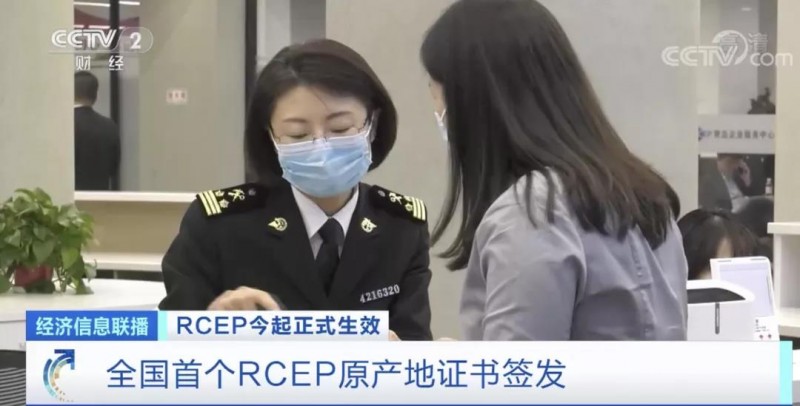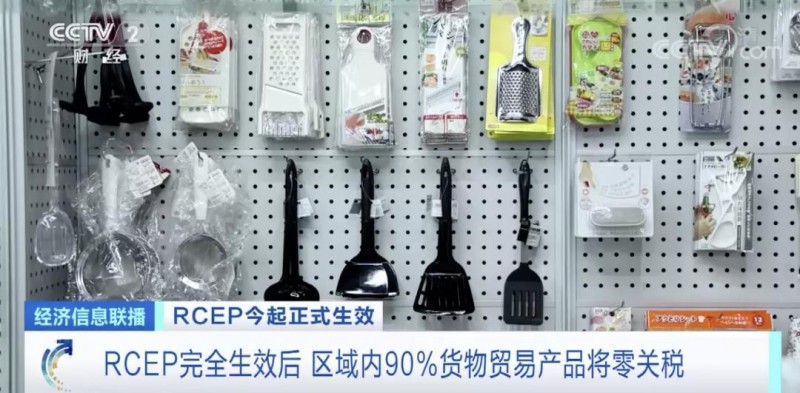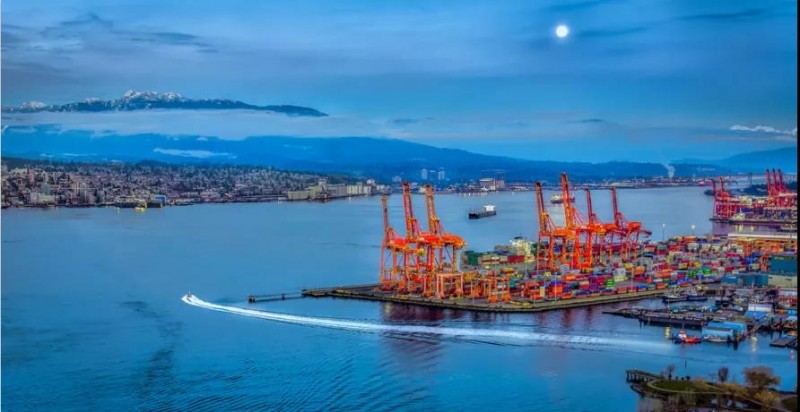Six ASEAN member states including Brunei, Cambodia, Laos, Singapore, Thailand, and Vietnam, and four non-ASEAN member states including China, Japan, New Zealand and Australia have officially started to implement the agreement.
What changes will the implementation of RCEP bring to foreign trade companies in the region and even the economies of various countries? What tangible benefits will it bring to ordinary people?
"Regional Comprehensive Economic Partnership Agreement" officially entered into force

With this certificate, the export company can save nearly 10,000 yuan in taxes with just this batch of goods.
Liu Kun, Business Manager of Shandong Qingdao Gulf Group Co., Ltd.: Previously, the tax rate levied on imports of products in Japan was 3.3%. After RCEP took effect, its tariff became 3%. The tariff on this product will be reduced to 0 year by year in the subsequent implementation of RCEP. Therefore, after a comprehensive calculation, the tariff reduction that we can enjoy for Japanese exports in the first year is about 1 million yuan.
According to customs statistics, in the first 11 months of 2021, the total value of China's imports and exports to the other 14 RCEP member states was 10.96 trillion yuan, accounting for 31% of my country's total foreign trade value.
After the agreement enters into force, the largest reduction in tariffs will be imported machinery, plastic products, electrical machinery and electrical equipment, as well as exported textiles, luggage, and plastic products.
Bi Haijun, Director of the Customs Tariff Department of Qingdao Customs: In 2022, Shandong exports can enjoy a tariff reduction of 380 million yuan in the region; after the completion of the tax reduction process, Shandong imports can reduce tariff costs by about 900 million yuan.
After RCEP is fully effective, 90% of trade products in the region will have zero tariffs

Fang Hui runs a store in the imported Goods City of Yiwu, Zhejiang. The store mainly sells imported fresh-keeping boxes, kitchenware, cleaning supplies, etc. Fang Hui told reporters that more than 80% of the goods in the store can enjoy RCEP tariff concessions. So she hurriedly added orders with foreign sellers.
It is understood that after the agreement comes into effect, the immediate zero-tariff ratio between my country and ASEAN, Australia, and New Zealand will exceed 65%.
In 2022, 24.9% of China's products will be open to Japan with zero tariffs, and 55.5% of Japan's products will be opened to China with zero tariffs, and more products will be reduced in tax year by year.
Cao Zhongying, Section Chief of the Second Comprehensive Business Section of Yiwu Customs under Hangzhou Customs: After the RCEP is fully effective, zero-tariff products in goods trade in the region will reach about 90%.
Cui Fan, professor of the School of International Economics and Trade, University of International Business and Economics: Like speakers and American ginseng, zero tariffs are implemented in the first year, which will have a certain impact on prices.
However, the tax reduction of most products is a gradual implementation process, such as electric ovens and microwave ovens. The 15% tariff is gradually implemented in 10 years. After 10 years, it will become zero tariff. Some products are less expensive in the final consumer price. It takes a process to reflect.
The RCEP agreement reduces the tariff cost of cross-border trade between member parties. Among them, the traditional high-tax rate industries are the most affected, such as food, agriculture, consumer goods and automobiles.
In the future, consumers will buy Japanese cars, Australian skin care products, New Zealand honey, Thai fruits, etc. at cheaper prices.
Standards are more uniform and communication is more convenient
Not only is tariff reduction, RCEP also brings a more unified standard and a more convenient environment for the circulation of elements.

The certificate of origin is more convenient to handle, and the gold content is higher
The certificate of origin is a certificate of the "nationality" of the goods, and an important certificate for exporting enterprises to enjoy preferential treatment such as tariff concessions in the importing country.
With the entry into force of the RCEP agreement, the customs will issue certificates of origin for enterprises, and enterprises can enjoy RCEP tariff reductions by virtue of the certificates of origin.
In order to allow enterprises to better enjoy the policy dividends of the RCEP agreement, the customs has vigorously promoted the approved exporter policy, that is to say, enterprises that meet the relevant qualifications approved by the customs can independently issue a declaration of origin without applying for a certificate of origin from a visa agency , Enterprises can arrange production and export more flexibly.
In addition, a highlight of the RCEP agreement is the cumulative rules of origin.
Products and raw materials originating in member states can be accumulated and included in the final product as originating ingredients.
ASEAN countries can use the RCEP accumulation rules to order parts and components from Chinese automakers for domestic vehicle manufacturing, which will also greatly expand the automakers' parts export market.

